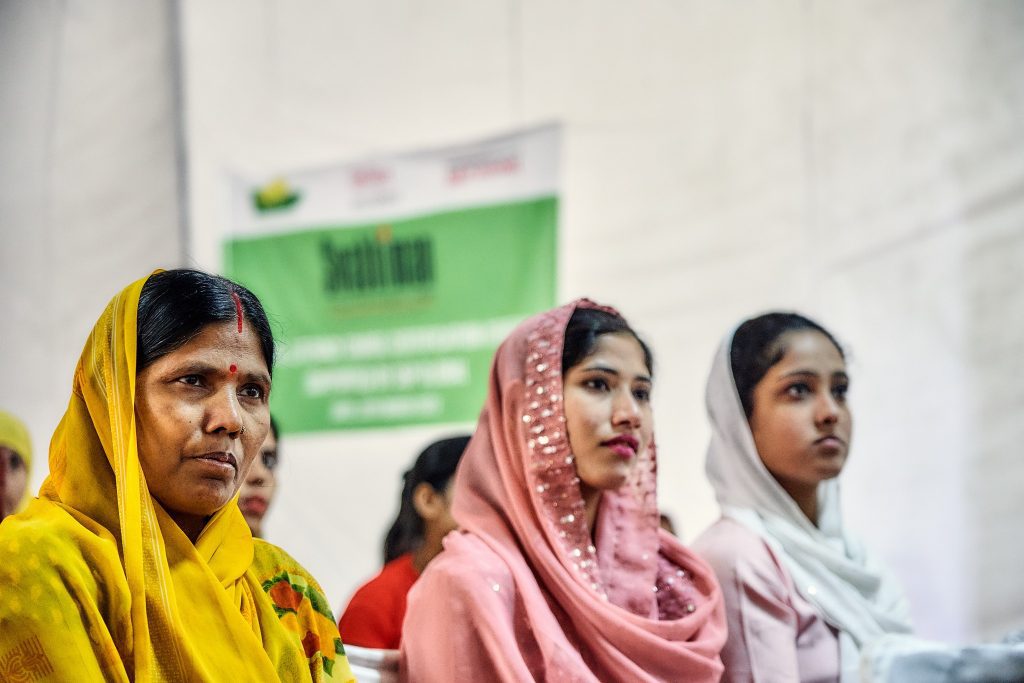As the renowned figure Betty Friedan once said, “Economic equity is enormous empowerment of women. Having jobs that provide income means that women can be a more effective force, a more equal force, in the political process. Women with income take themselves more seriously and they are taken more seriously.” These words emphasize the crucial role that financial literacy plays in empowering women to make informed financial decisions. take control of their financial futures and close the gender gap.
In today’s integrated global financial market, where the range and complexity of financial products are expanding, individuals must develop a thorough understanding of finance to make choices that align with their goals and needs.
Women and Financial Literacy
Financial literacy plays a crucial role in empowering individuals to make informed financial decisions, manage their money effectively, and achieve long-term financial security. However, there exists a significant gender gap in financial literacy worldwide, with women being disproportionately affected.
This gender gap not only hampers individual financial well-being but also has broader implications for gender equality and women’s economic empowerment. Addressing this issue is crucial for creating a more inclusive and equitable society.
India, like many other countries, faces the challenge of low financial literacy levels among women. According to a report, leveraging technology can be a powerful tool to empower women and bridge the gender gap in financial literacy.
Online platforms, mobile applications, and digital learning resources can provide accessible and engaging financial education to women, enabling them to acquire essential financial skills and knowledge. By utilizing technology, financial literacy programs can reach a larger audience, particularly those in remote areas, where access to traditional educational resources may be limited.
Barriers to Women’s Financial Literacy: Reasons for Gender Gap
Various studies have documented the existence of gender differences in financial literacy, with women generally performing worse than men in financial knowledge tests and exhibiting less confidence in their financial skills. In India, despite the progress women have made in various fields, including politics, sports, and technology, there are still areas where they lag behind, such as personal financial planning.
Several barriers hinder women’s financial literacy in India, including cultural, financial, psychological, and physical factors. Lack of independence, cultural norms that restrict women’s involvement in financial matters, absence of women-centric financial schemes, limited accessibility to financial institutions, lack of information on financial services, and low levels of basic education contribute to the gender gap in financial literacy.
Importance of Financial Literacy Among Women
- Longer Life Expectancy: Women, on average, live longer than men, making it crucial for them to understand financial planning and investment avenues to secure their financial well-being in the future.
- Economic Growth: Women’s participation in financial decision-making and investment contributes to overall economic growth by enhancing liquidity in the market and expanding trade opportunities.
- Self-Independence: Financial literacy empowers women to be financially independent, matching their male counterparts in making rational financial decisions.
- Freedom from Exploitation: Financial literacy protects women and society from falling victim to exploitative financial schemes and high interest rates.
- Family Well-being: A gender gap in financial literacy can affect the relative economic power within households. Women’s control over household resources tends to prioritize family well-being, particularly children’s welfare.
Research studies have highlighted the gender disparity in financial literacy and its impact on women’s economic empowerment. A study examined the financial literacy gender gap in India. The research revealed that women tend to possess lower levels of financial literacy compared to men, leading to a lack of confidence in managing personal finances. This disparity is influenced by various factors, including cultural norms, limited educational opportunities, and societal expectations.
Promoting Financial Education Among Women
To address the gender gap in financial literacy, it is crucial to promote financial education among women from an early age. The importance of incorporating financial literacy programs into the school curriculum has been observed in recent studies by integrating financial education into formal education systems, young girls can develop essential financial skills and knowledge, empowering them to make informed financial decisions throughout their lives.
In India, where women’s literacy rates are lower than men’s, the gender gap in financial literacy becomes more pronounced. On a global scale, addressing the gender gap in financial literacy is the integration of financial education into the school curriculum. Several countries have recognized the importance of early financial education and have implemented programs to equip young girls with essential financial skills.
In the United States, the state of Florida introduced a mandatory financial literacy course for high school students. This course covers topics such as banking, budgeting, credit, and investing.
Prominent businesswoman and philanthropist, Melinda Gates, once remarked, “A woman with a voice is, by definition, a strong woman. But the search to find that voice can be remarkably difficult.” By integrating financial education into the curriculum, young girls can find their voices in the realm of personal finance and take control of their financial futures.
The Gender Gap Will Be Bridged
In conclusion, by leveraging technology, tailoring programs to women’s specific needs, and fostering collaboration among stakeholders, it is possible to equip women with the knowledge and skills necessary to make informed financial decisions. Investing in women’s financial literacy is not only an investment in their individual well-being but also a means to drive inclusive economic growth and build a more equitable society.
Bridging the gender gap in financial literacy is crucial for empowering women, promoting economic growth, and ensuring the well-being of families. Efforts to enhance financial literacy should focus on addressing cultural barriers, developing women-centric financial schemes, improving accessibility to financial services, and providing basic financial education. By prioritizing financial literacy among women, India can achieve greater gender equality and overall economic prosperity.
Smile Foundation and Financial Literacy of Women
Smile Foundation’s women empowerment programme, Swabhiman through its Entrepreneurship Development projects is making concerted efforts towards women empowerment. The projects have financial literacy workshops as one of their core elements fulfilling the essential needs for them to become self-sustaining entrepreneurs in the future.
Our girl child education campaign, She Can Fly focuses on girl child education and bring them back into the learning fold. But education’s purpose goes beyond classroom learning and fortifying their socio-emotional needs. It ultimately means the financial independence of women of all ages and their ability to make a respectable livelihood for themselves and their families. You can make a donation here for Indian women to become the best version of themselves.










One reply on “Closing The Gender Gap in Financial Literacy”
Hello, we from Euronext Solutions want to collaborate with you on another marathon for this cause. Can we have more details about the cause and how we can collaborate?